Strawberries are refreshing and delicious fruits that are surprisingly easy to grow at home.
But if you’re looking at how to grow strawberries in Ohio then there are a few things to keep in mind.
For starters, you’ll only yield a good strawberry harvest if you plant the strawberries at the right time and take good care of your plants.
If you’re keen to start growing strawberries at home in Ohio then you’re in the right place.
Our detailed guide will tell you everything you need to know for one of the most impressive strawberry harvests you have ever seen.
Do Strawberries Grow Well In Ohio?
Strawberries tend to grow best in cooler climates.
Generally speaking, temperatures between 60 and 80 degrees will yield the best results.
In Ohio – The average daily temperature in summer is between 62 and 74 degrees so this is a great place to get planting strawberries.
There are typically three different categories when it comes to strawberry plants and choosing the right one for your location is an absolute must.
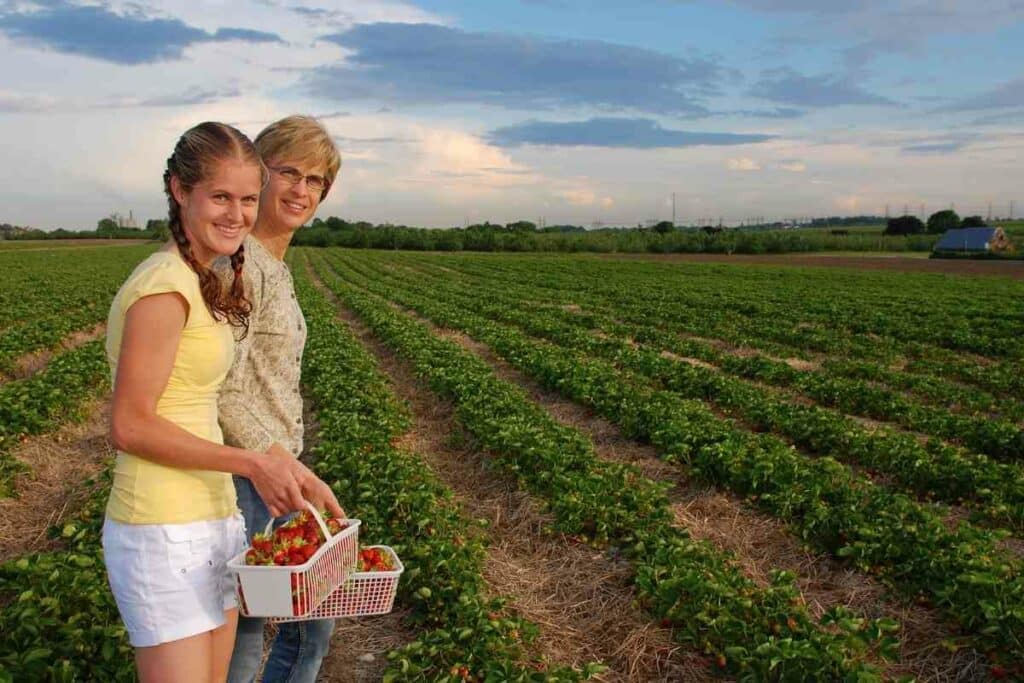
Before we get into the nitty gritty of that, let’s take a look at the different categories:
- June bearing strawberries are early season plants whose fruits are ready to be picked just as summer sets in. During the months of June and July, you will find that these plants have the highest concentration of fruit but this dwindles rapidly so you don’t have a very long harvesting period.
- There are also mid season strawberry plants which start to bear fruit after your June bearing plants. What’s surprising is that they start fruiting only a week or so after the June plants so you don’t have to wait much longer.
- Finally, there are ever-bearing strawberry plants although some people would refer to these as day neutral cultivars. While they will grow all through the season, you will find that they provide the best harvest during early summer and again in the middle of fall.
Later in this guide, we will look at which is the best variety of strawberry for growing at home.
For now, let’s think a little more about the intricacies of growing strawberries in Ohio.
If you are in the northeastern part of the state then we would recommend planting your strawberries between the middle of April and the middle of May.
The reason for this is that, by this point, the soil won’t be as moist and will be far easier to work with.
Moreover, it’s still cool enough for the plants to become well established where they would struggle if you planted any later than this.
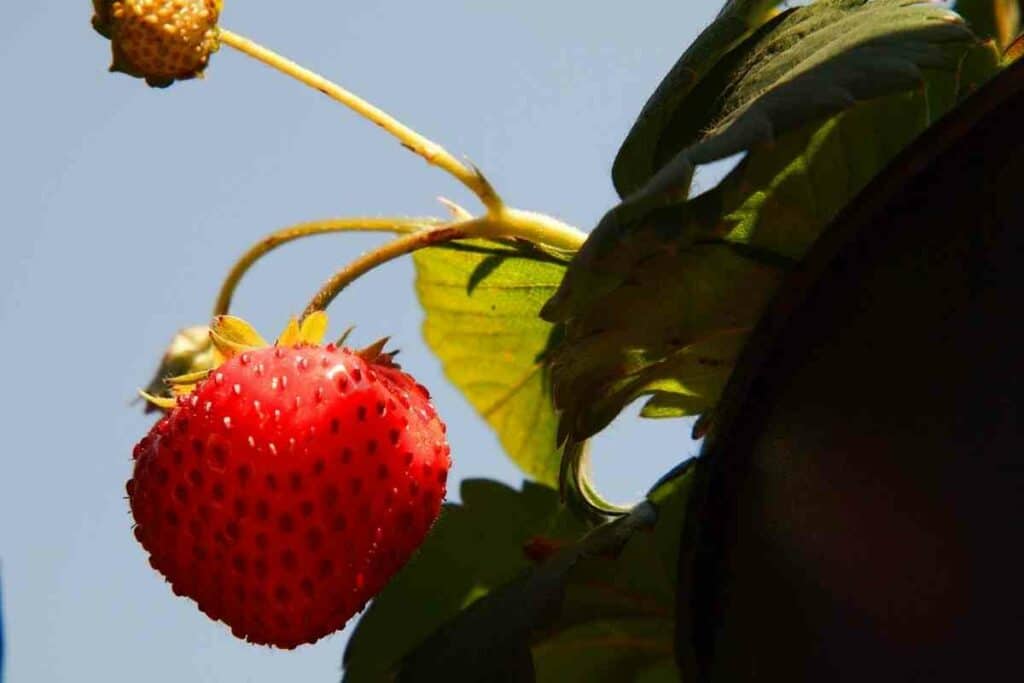
There are some gardeners that like to plant their strawberries in the fall as this ensures priority harvesting at the start of the growing season.
However, we wouldn’t recommend doing this if you live in Ohio because there is greater risk of frost damage.
While we will look at frost protection later on, young plants are far more susceptible to this.
What’s The Best Type Of Strawberry Plant For Growing At Home In Ohio?
Earlier, we talked about the various types of strawberry plants and we promised to let you in on the secret of which is best for Ohio.
Generally speaking, the June bearing strawberry plant is going to be your best option as it will deliver high yields and the quality is fantastic.

There are lots of different options to choose from here.
But when growing in Ohio, things like Guardian, Lester, Surecrop, and Earliglow are among the best.
However, if you want to, then it is also possible to try some ever-bearing varieties like Tristar which will do well in this state.
Just remember to plant at the right time.
Do Strawberries Self Pollinate?
It is true that strawberry plants will self pollinate.
However, it’s better if there are bees around to help with this.
Of course, if you’re growing the strawberries indoors such as in a greenhouse then pollinators won’t have automatic access to them.
To counteract this problem, gardeners can use a vibrating device.
When growing the plants outdoors make sure to include lots of other ways to attract pollinators to your garden.
This can include planting native plants, having a water source and limiting the use of chemicals in the yard.
Where Should I Plant My Strawberries?
When growing strawberry plants, you must make sure that you find a spot in full sun as this is where they will thrive and you’ll get the best yield come harvest season.
Moreover, full sun ensures better quality strawberries which is something we’re all keen to get.

The soil type isn’t too much of a concern as strawberry plants will do well in various different types of soil.
That said, if you want to give them the best chance, then plant your strawberries in fertile, loose soil and add in as much organic matter as possible.
It’s also a good idea to opt for slightly more acidic soils with a pH between 5.8 and 6.5, where possible.
Do keep in mind that these plants do not like a lot of moisture in the soil so these should be avoided.
The best way to keep things well drained is to put the plants in a raised bed to improve drainage.
Also try to keep your strawberry plants away from locations where you have recently grown potatoes or tomatoes since there could be more problems with diseases and pests in these areas.
Ensuring Enough Space For Plants
Choosing the right location for your strawberry plants is incredibly important but it is also imperative that the plants have enough space.
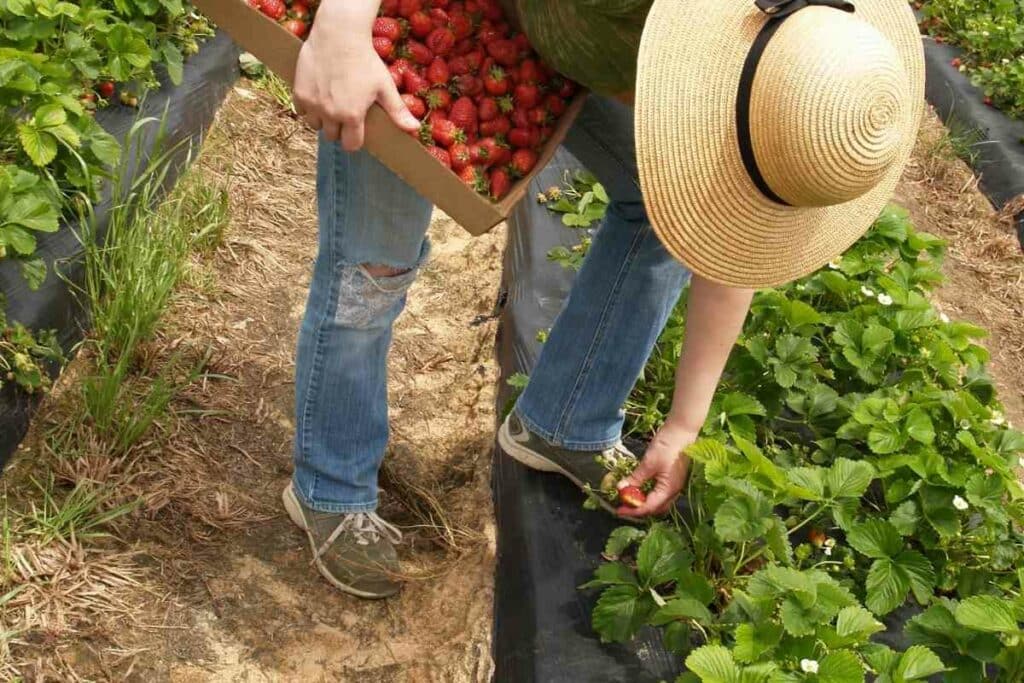
Strawberry plants don’t like to be crammed together especially if you are growing June bearing varieties.
In This Case – You will need to make sure you plant them at least 12 to 24 inches apart. If you are planting in rows, leave at least 36 inches between them.
If you are planting ever-bearing strawberries then you can afford to place them a little closer together but we wouldn’t suggest anything less than 8 to 12 inches between each plant.
The same spacing for rows applies here too.
When you put the plants into the soil, make sure that you only cover half of the crown but ensure that the roots are fully submerged.
Be careful not to bend the roots horizontally as this can cause damage.
Don’t Forget To Remove The Blossoms
When you are growing June-bearing strawberry plants, you will need to make sure that you remove the flowers as soon as you notice them.

You’ll need to stay on top of this all the way through the growing season.
The reason for this is that your fruit production will be much greater where blossoms are not allowed.
For ever-bearing strawberries, you will need to remove the flowers as they start appearing but only up until the middle of June during the first year.
After this, it’s OK to leave the flowers to set fruit.
How Do I Need To Fertilize And Water My Strawberry Plants In Ohio?
If you are going to grow any type of plant, it is vital that you provide enough water and proper fertilization.
Without these things, there is very little hope for the plant surviving and growing strawberries in Ohio is no exception to this rule.
Before we get into the details of what fertilizers you will need to use, we should point out that you will want to stay on top of testing the soil.

This isn’t something that you’ll need to worry about all the time; doing this once every couple of years will be more than enough.
The benefit of this is that your strawberry yield will be of a much higher quality.
Before planting your strawberries:
- We recommend that you apply lime and nutrients in line with the results of your soil testing.
- You will also need to use nitrogen which can be added using one ounce for every 100 square feet. This needs to be applied after planting and it is recommended to wait at least seven days.
- After this, you should then apply a further nitrogen treatment in the middle of June and again during the middle of August if the summer has been particularly wet.
When it comes to watering strawberries, you will need to stay on top of things especially during drier periods of weather.
For the most part, strawberry plants will need between one inch and one and a half inches of water every week.
You’ll need to keep this up between June and the middle of August.
However, it is vital that you do not go over the top as the strawberry plants will not thrive if they are left to sit in soggy soil.
Problems With Pests And Diseases In Strawberry Plants
As with other types of plants, strawberries are prone to a number of diseases and pests.
While it isn’t always possible to protect against them, knowing what you’re up against will give you the upper hand.
Slugs
One of the biggest problems for strawberry plants is the slug.
This applies to both outdoor and indoor plants so you really need to be vigilant.

While slugs can cause a significant amount of damage to your strawberry plants, they will be more successful if the plants are grown in the ground.
This is one of the main reasons that we suggest planting in containers.
Do make sure that you stay on top of watering as containers are known to dry out much more quickly.
Moreover, ensure that you only use the best quality potting soil.
Aphids
Another common pest that affects the strawberry plant are aphids.
If you’re a keen gardener then you’ll know that these pests are a pain throughout the garden.
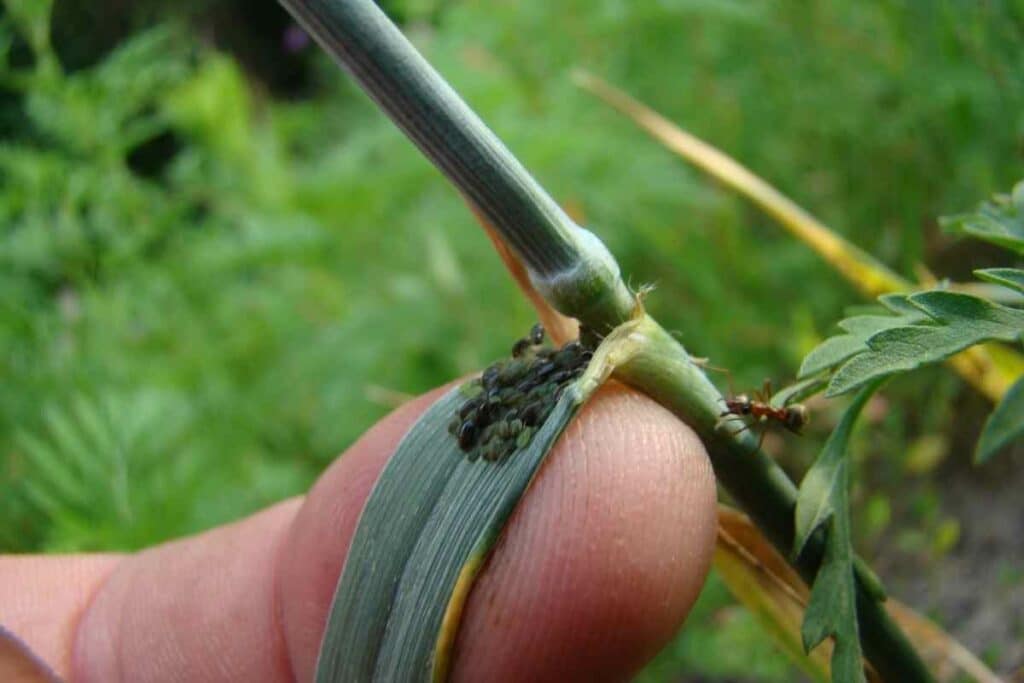
You will typically find aphids clinging to the bottom of the leaves of your plant as well as along the stems.
While they sit here, they’re constantly feeding on the sap.
After this, they will leave what is known as honeydew on the plant and this serves as an attractant to other pests.
Japanese Beetles
The Japanese beetle is not easily mistaken since it has a copperish green color and is a rather large pest that measures over 1cm.
The problem with these bugs is that they are known to cause damage to the flowers and will skeletonize the leaves.
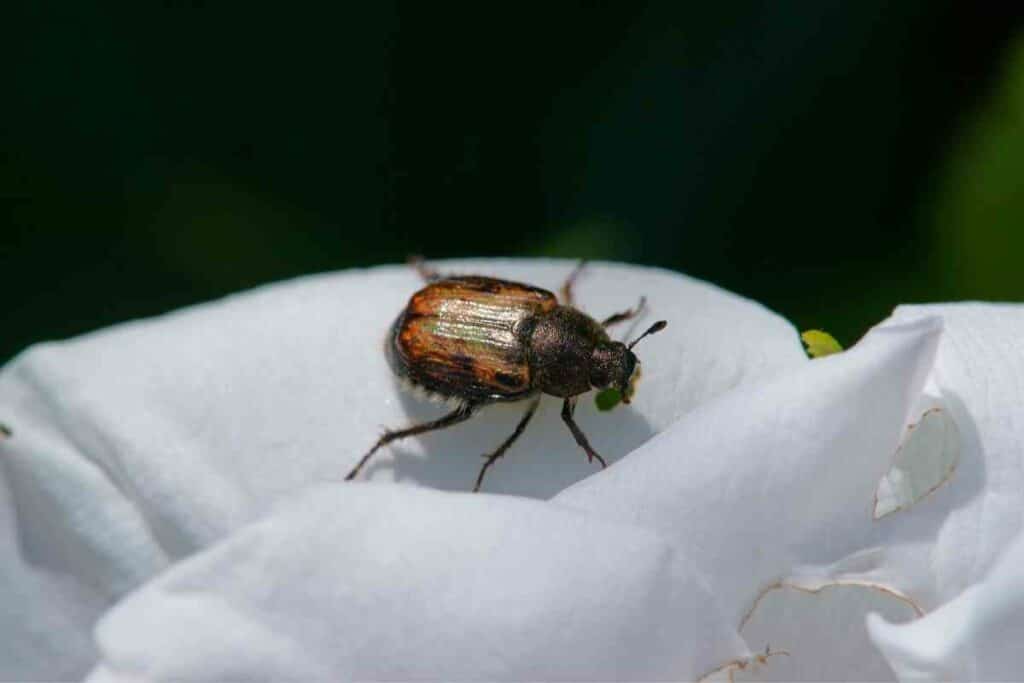
If you don’t deal with the problem quickly then Japanese beetles can cause some really nasty damage.
However, you will have a good degree of success against them if you use floating row covers and make sure that you manually remove any bugs that are visible.
During the Winter – You can release nematodes which are parasitic and will cull the numbers through the cold weather.
If you would like to use a more natural method for tackling Japanese beetles, then it is entirely possible to use a neem oil spray.
Strawberry Spider Mites
Spider mites can wreak havoc with your strawberry plants and they’re incredibly annoying.
Part of the problem is their size; they’re really small so they’re not easy to spot and just when you think you’ve got rid of them all, more appear.
You will know right away if you have problems with spider mites as they cause the leaves of the plant to become yellow and stippled.
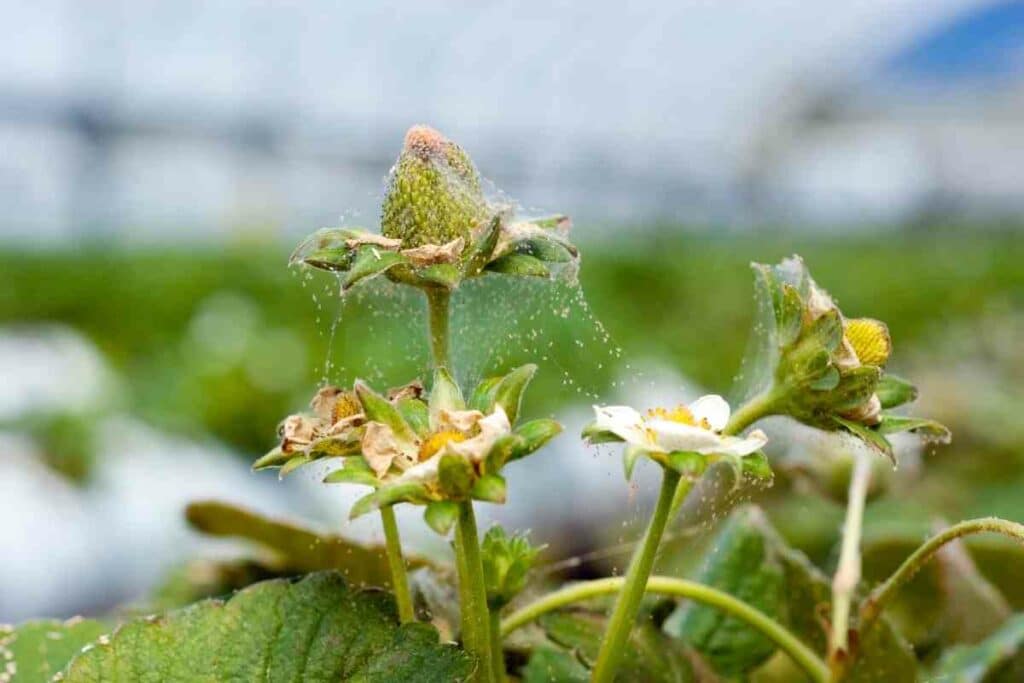
You may also notice webs appearing over the leaves and when you pay very close attention, you can see the spider mites going about their business.
While they are incredibly annoying, spider mites are also easy to deal with since using a strong water jet will drastically reduce numbers which is a good place to start.
Combining this with things like insecticidal soaps can be effective.
Just make sure to buy products that are designed to target these particular pests.
Angular Leaf Spot
Strawberry plants are prone to a disease known as angular spot leaf which is caused by a bacteria.
As a result of this, the plant will begin to develop lesions, soaked in water which are evident on the lower parts of the leaves.
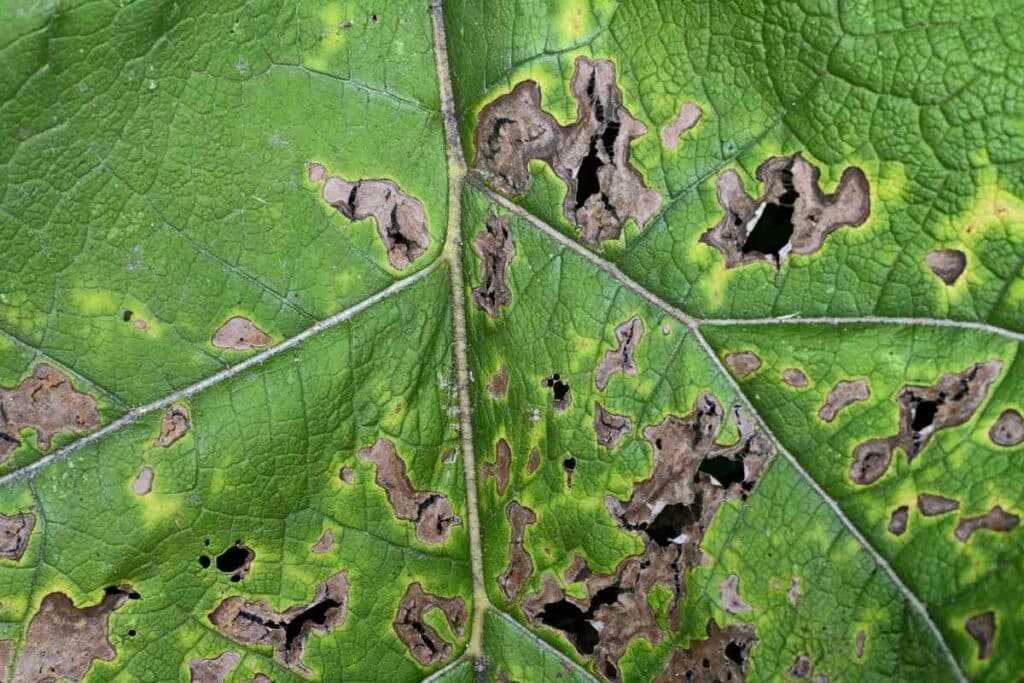
They will begin to get bigger and seep over the course of time, if left untreated.
What’s concerning about this disease is that the bacteria can still thrive over winter and so problems may reappear the following spring.
This is because they live off the debris in among the crops.
While not impossible to get rid of angular spot leaf, it is incredibly difficult and many people struggle to do it at all.
This is largely because chemicals are not effective against this disease.
Works Well – The best way to avoid your plants falling victim to this disease is by only buying certified disease free plants and making sure that you rotate your crop.
Gray Mold
Gray mold is another common disease that affects the strawberry plant blossoms; only this is a fungal disease rather than a bacterial one.
You may also notice small rotten patches on the fruits and the flowers will die off, turning a shade of brown.
As the disease takes over, mycelium-like structures will wrap around the fruit, eventually mummifying it!
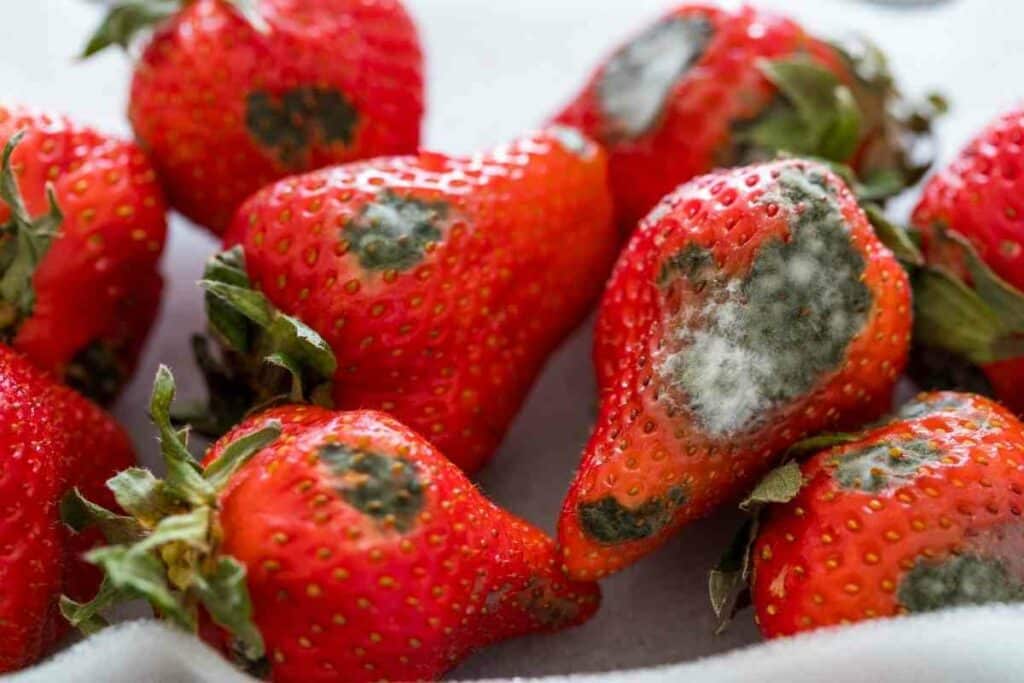
You will usually notice problems with gray mold when the conditions are moist and humid but since you cannot control the weather, you have to take alternative action.
Make sure to space your plants well apart and ensure the soil is kept at the right moisture level.
In the event that some plants are infected, you will need to entirely remove these to prevent the disease from spreading.
While you can use preventative fungicidal products, these aren’t always 100% reliable.
Protecting Strawberry Plants Against Frost
As we mentioned earlier on, strawberry plants are very prone to frost damage, especially in the spring.
This is why it is really important to make sure that the plants have been well protected over the course of the winter.
The best way to ensure this is by using mulch but then removing this as spring sets in.
If you don’t offer the best frost protection to your strawberry plants, you will notice a less than satisfactory harvest.
Conclusion
Ohio is a great location for growing strawberries as the climate is just what these plants like.
However, if you want the best yield, you will have to ensure that you take very good care of your plants.
